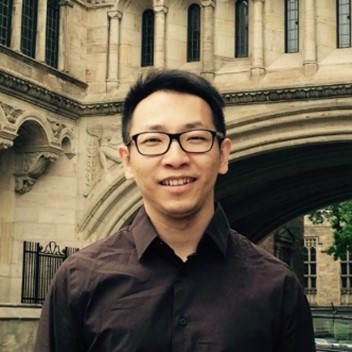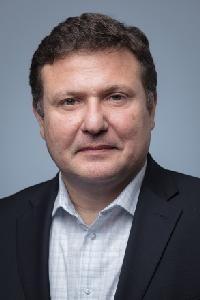Remediation Methods for 1,4-Dioxane
Date and Time: Wed, April 14, 2021, 12:30 PM - 4:30 PM
Location: GoToWebinar
Presenters:
- Amine Dahmani, Ph.D., Adjunct Professor - UCONN Civil & Environmental Engineering, Senior Manager - SESI Consulting Engineers
-
Mengyan Li, PhD, Associate Professor, Department of Chemistry and Environmental Science, NJ Institute of Technology
-
Fuad Dahan, Ph.D., P.E., LSRP, Principal, SESI Consulting Engineers
Continuing Education Credits:
The CT State Board of Examiners of Environmental Professionals (LEP Board) has approved this course/webinar for 4.0 hours of continuing education credits (CTLEP-444W Revised). Note: This course was previously offered in NJ as a 3 hour program (CTLEP-444).
Fees:
- EPOC Members: $150
- Non-members: $250 (consider joining EPOC at this time to receive the member rate for this program)
- Gov't Employee/Students: $75
Course Description:
This half-day program will give the attendees an in-depth understanding of the available and innovative remediation technologies for 1,4-dioxane.
Course Agenda/Topics:
1) Introduction
- General and physiochemical properties
- Regulatory status
- CTDEEP regulations
- 1.4-Dioxane prevalence
2) Bioremediation
- Monitored natural attenuation
- Biostimulation
- Bioaugmentation
- Pilot-scale tests
3) Chemical oxidation
- In-situ chemical oxidation methods
- Persulfate oxidation
- In-situ applications
- Permanganate oxidation
- In-situ reactive zones/barriers
- Treatability studies
4) Ex-situ treatment approaches
- Advance oxidation processes
- Adsorption
- Bioremediation
5) Discussion - Q&A
Presenters Bios:
Dr. Amine Dahmani

Dr. Amine Dahmani obtained a Ph.D. in Petroleum Engineering from LSU in 1986. After working in the oil industry for four years, he joined the University of Connecticut (UCONN) in 1990 to work on environmental remediation research and development. He conducted numerous site assessment and remediation studies and implemented (through the EPA Superfund Innovative Technology Evaluation (SITE)) the field application of the persulfate chemical oxidation technology developed at UCONN.
Dr. Dahmani joined Spectrum Analytical, Inc. in 2005 to head the remediation and petroleum forensics group. He conducted more than 90 remediation treatability studies and more than 50 petroleum forensic studies for various clients nationally and internationally. He has evaluated various remediation technologies including chemical oxidation, chemical reduction, biostimulation, bioaugmentation, in-situ stabilization/solidification and thermal treatments. Before joining SESI, Dr. Dahmani worked at Langan Engineering and Environmental Services where he was senior manager in the remediation technology group.
Dr. Dahmani is also an Adjunct Professor at the UCONN Civil & Environmental Engineering Department and is the author of numerous publications. Most recently Dr. Dahmani has been working on an innovative technology to reduce beach erosion and stabilize contaminated sediment.
Dr. Mengyan Li

Dr. Mengyan “Ian” Li is an Associate Professor in the Department of Chemistry and Environmental Science at New Jersey Institute of Technology, specializing in environmental microbiology and biotechnology. Dr. Li received his MS and PhD degrees in Environmental Engineering at Rice University. His research focuses on untangling novel microbial processes that decompose and transform emerging contaminants (e.g., 1,4-dioxane, PFAS, and antibiotics) and developing effective treatment technologies suited for municipal, industrial, and agricultural settings. To tackle frontier challenges in the water-energy-food nexus, his group synergizes modern biotechnological tools (e.g., omics, single cell analysis, and microarray) with high-resolution mass spectrometry. Their recent work has been featured on the cover of Environmental Science and Technology Letters and reported by multiple public media, such as Chemical & Engineering News (C&EN) and Wateronline.com. Dr. Li is a recipient of the NSF CAREER Award, ISPTS Young Scientist Award, and NJIT CSLA Research Rising Star Award in 2019. His research group has received funding supports from NSF, USDA, EPA, USGS, and industrial collaborators.
Dr. Fuad Dahan

Dr. Fuad Dahan has over 15 years of environmental engineering experience. His diverse experience includes environmental treatment system applications, design, research and monitoring. He has worked on federal, state, and private projects. Dr. Dahan joined SESI in 2013 as a Senior Project Manager. He managed multi-million dollar projects and programs for large corporations including Fortune 500 companies.
Previously, when Dr. Dahan worked at SAIC, he managed a $5 million project to treat industrial wastewater at federal facilities. He also managed remediation projects at the McGuire Air Force base in NJ.
When Dr. Dahan worked at URS Corp, he prepared the final report for an $8 million remediation project. He provided daily field supervision of construction operations for that project to ensure conformity with the project specifications.